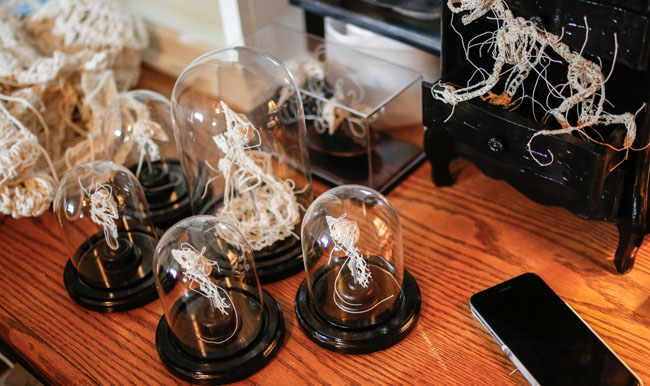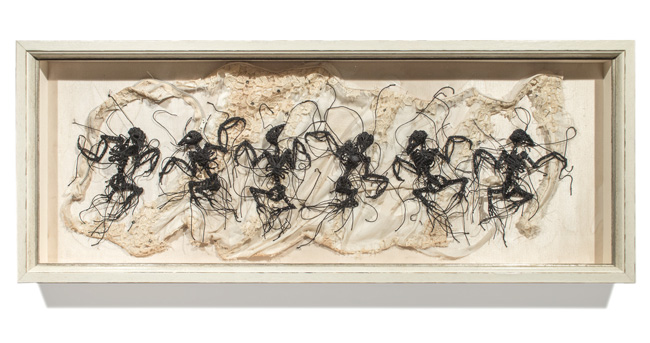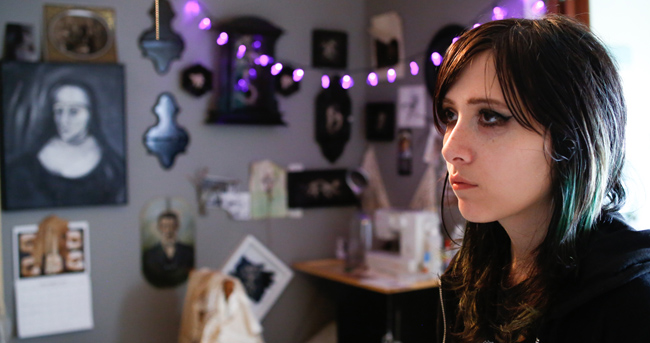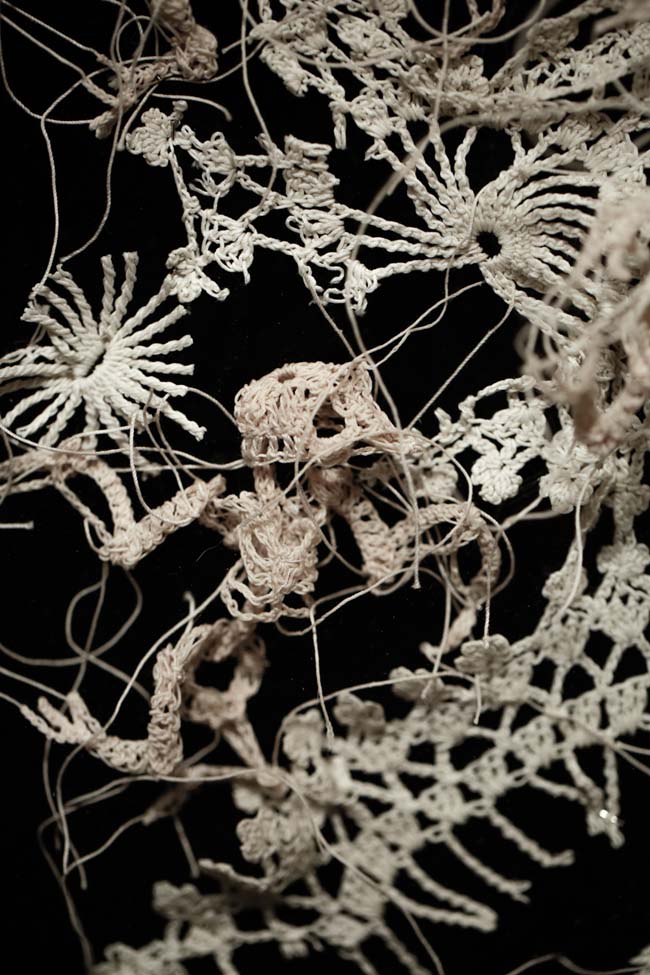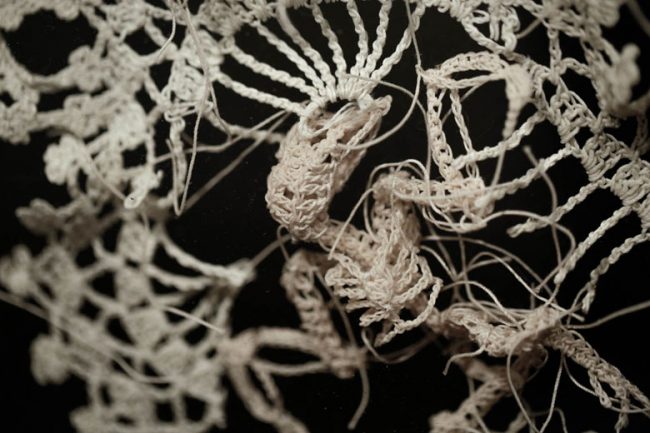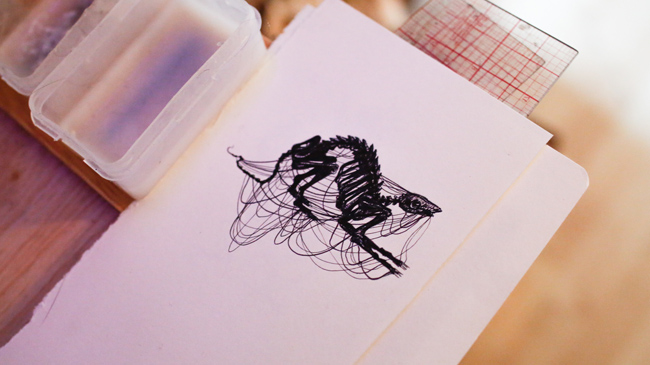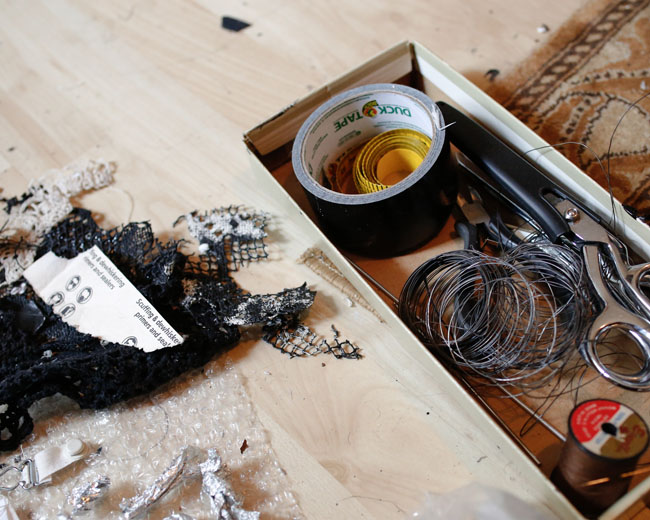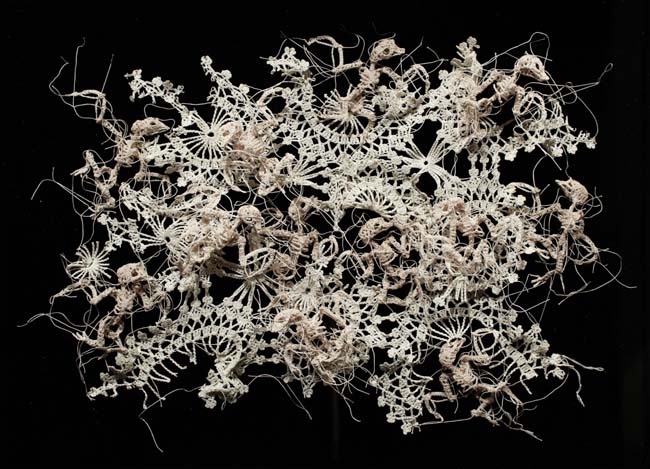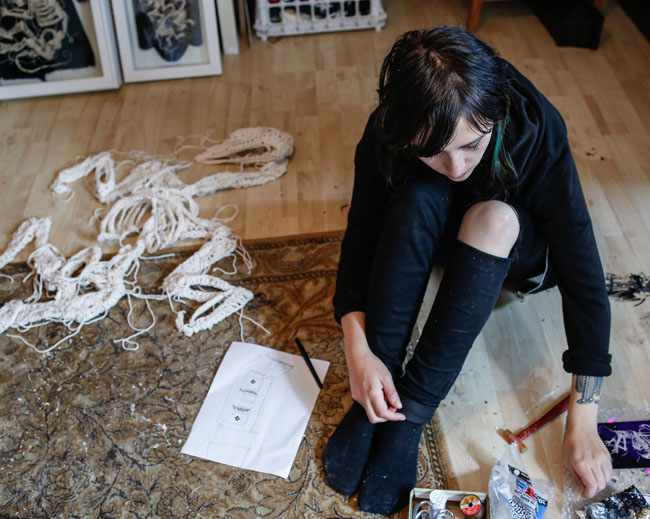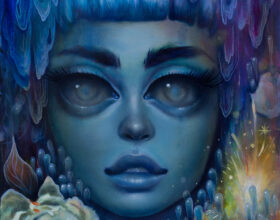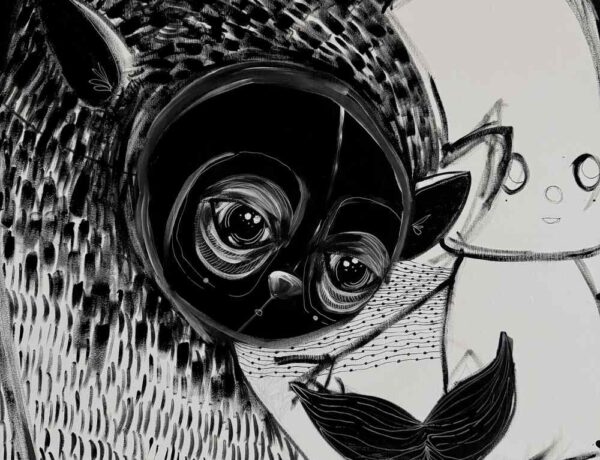Paradigm Gallery + Studio, Philadelphia, will present this month, Lazarus Taxa, an exhibition of new works by Caitlin McCormack. Lazarus Taxa showcases over 50 fibre sculptures, marking a continuation of the artist’s ongoing investigation of the warping of memory over time through the continuous breakdown of physical matter. This is a significant new body of work for Caitlin and has taken nearly two years to complete.
Caitlin McCormack’s artwork intrigues me. I am instantly reminded of a drawer of old worn, stained, ironed and carefully folded crocheted edged linens and doilies my mother kept. I can even smell the musty odour of the drawer when I look at Caitlin’s work. For me, there is an overwhelming sense of nostalgia in her delicate and complex pieces, and it is fitting that the work be imbued with this feeling because Caitlin’s works deal with grief, loss, memory and the gradual breakdown of the material world. Yet just as I feel this, I am taken in the opposite direction, because Caitlin creates another existence for these memories and materials in the animals and human forms and structures that she creates, and in doing so, she breathes new life into them. Caitlin takes what has broken down, in a physical, emotional and metaphorical sense and renews it, through her skillful manipulation of delicate materials.
Caitlin McCormack: Lazarus Taxa
Opening Reception:
Friday, October 27, 2017 | 5.30-10pm
Exhibition Dates:
October 27 – December 9, 2017
Paradigm Gallery + Studio
746 S 4th Street,
Philadelphia, PA 19147
Hours of Operation:
Tuesdays, Thursdays, and Saturdays from 12:00pm – 6:00pm
For additional information and preview images, please contact Sara at sara@paradigm-gallery.com
For those less familiar with Caitlin’s artwork, Evan Senn’s interview “The Art of Caitlin McCormack” from 2016 reveals a fascinating insight into the artist’s ideas and artistic practice. I had the pleasure of catching up with Caitlin to talk about her upcoming show at Paradigm Gallery, and the ideas and artwork in this extensive exhibition of the artist’s latest sculptural pieces.
The name of the show is intriguing and unusual. I researched it and it was a very specific nomenclature to natural science. How did you come across the term Lazarus Taxa?
I was in the middle of an aimless research spiral in the middle of the night about a year ago and came across the term lazarus taxa, which refers to an animal or group of animals that somehow disappeared from the fossil record, only to appear again. This reminded me of the way memories, especially traumatic ones, can seemingly vacate your mind, and resurface some time later. Occasionally, they return more warped and twisted than they were before, which is something I’ve tried to demonstrate with this new body of work – a lot of the pieces are unnerving elaborations on an aesthetic that has become very familiar to me.
There are over 50 works in the show. How long did it take to create these works? How long does it take to create one of your larger, more complex and detailed pieces?
The work for this show took about a year and a half to complete, possibly longer. I work very slowly, on many things at once, which are always scattered on every surface in my studio at various levels of completion. It’s very inconvenient that you have to walk through my studio to get to the only bathroom in my house. It’s like walking on rocks in a river of lava. The largest and most intricate pieces can take eight months or more to finish. Nothing ever feels like it’s done – I’m constantly returning to pieces, futzing with the threads.
“This series takes a more perverse, grotesque turn for the artist, incorporating materials with a more sinewy and oily texture.” Could you elaborate further how this body of work builds on, or departs from, or extends your previous ones?
Working with forms that are intentionally hideous has been a really interesting challenge, since what I do is historically so heavily steeped in things coming across as decorative or beautiful. Many of the sculptures in this show are sort of like sequels to pieces I’ve made in the past, only constructed to look more ominous or distorted; some of them are halfway-dipped or fully drenched in globs of black enamel paint, and others are situated in desperate poses, with fragments of stained garments, to convey the way memories can turn monstrous with time.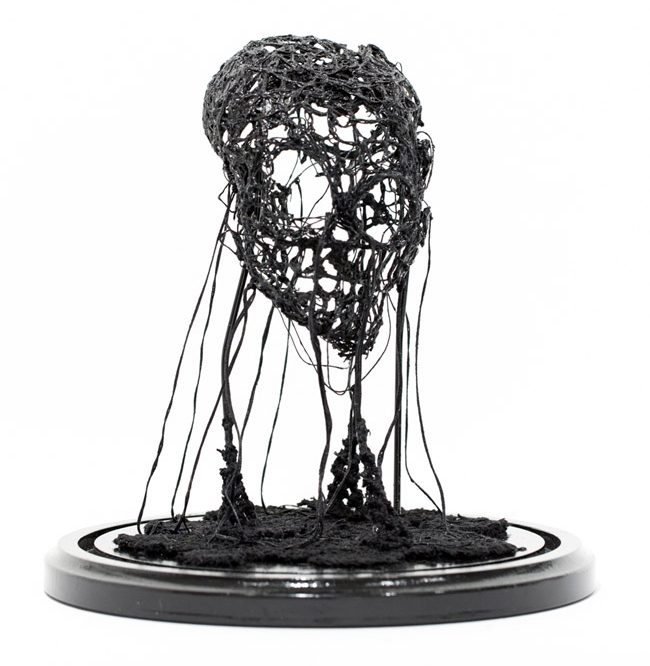

Memories, and how we perceive them, is a cornerstone to the content of your work and permeates each piece and each series. Paradigm explains that in the new works, “McCormack explores how repressed memories come back as monstrous and warped versions of original events” to “suggest the monstrosity that is produced when one attempts to forget and the festering of trauma that eventually returns.” Would you agree that this is a darker elucidation of your ideas than previously? Would you explain a little further?
I think that this attitude towards the resurfacing of traumatic memories is sort of a logical progression from the more generic way I encountered recollections or nostalgia in the past; instead of just kind of examining memory as an idea, these works are more directly related to personal accounts, some of which are very hideous, and certainly contribute to an increased sense of darkness in the work. Also the world has gone to shit and I haven’t been able to prevent my response to it from bleeding into the things I make.
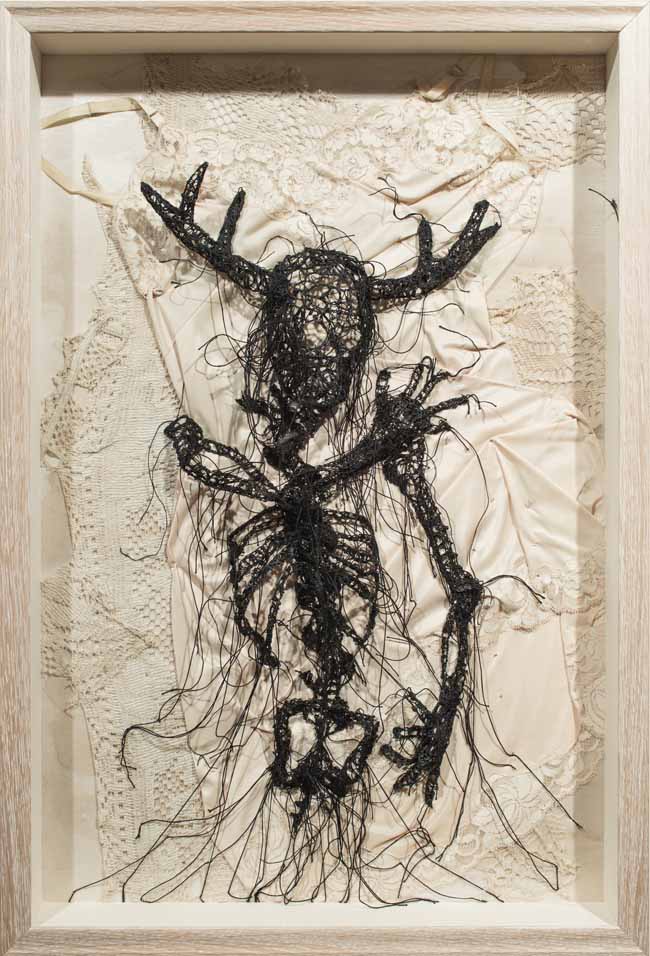
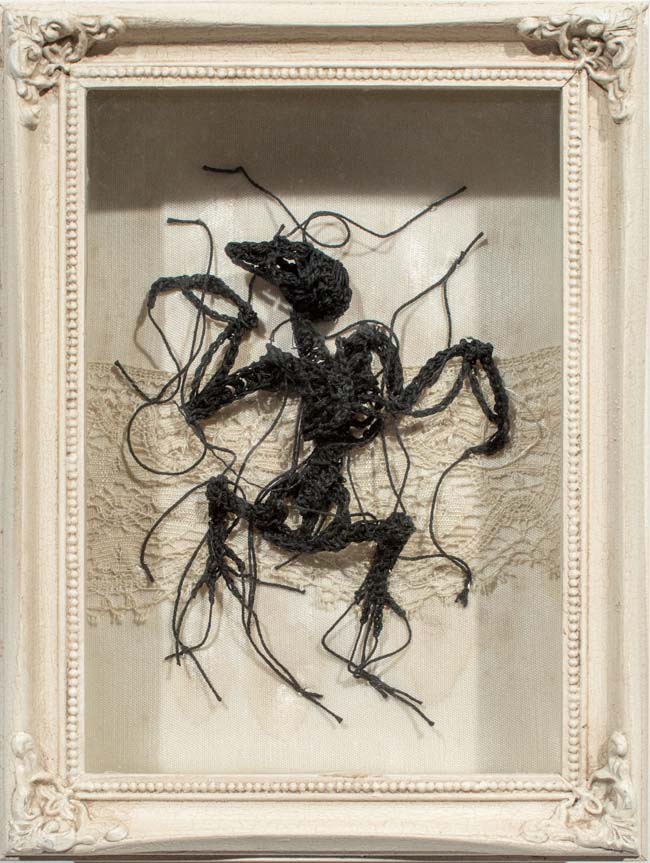
When I read about the underlying notions of your sculptures I am reminded of the term entropy, meaning a gradual decline into disorder, which became a byword of the 1970’s Land Art Movement. But your work takes this process back in a positive direction because the memories and forms once lost, regenerate with new meaning. When you give new life to forms and memories what do you build into them that the audience can share?
Wow, it’s awesome that entropy comes to mind when you consider what I do, because it is one of my most beloved concepts, even though I’m not academically equipped to fully grasp it from a scientific perspective or anything. I’m so drawn to it as an idea, and absolutely, it is a notion that comes into mind constantly as I work, since my process is rooted in simultaneous acts of proliferation and degeneration, both physically and conceptually. When I imbue a crocheted bird with an attachment to a specific memory, I hope that at least some semblance of my emotions will come across, to become embedded in the loops and frayed threads, and furthermore hope that someone looking at it might join in to form a shared sense of grief, nostalgia, or tenderness.
